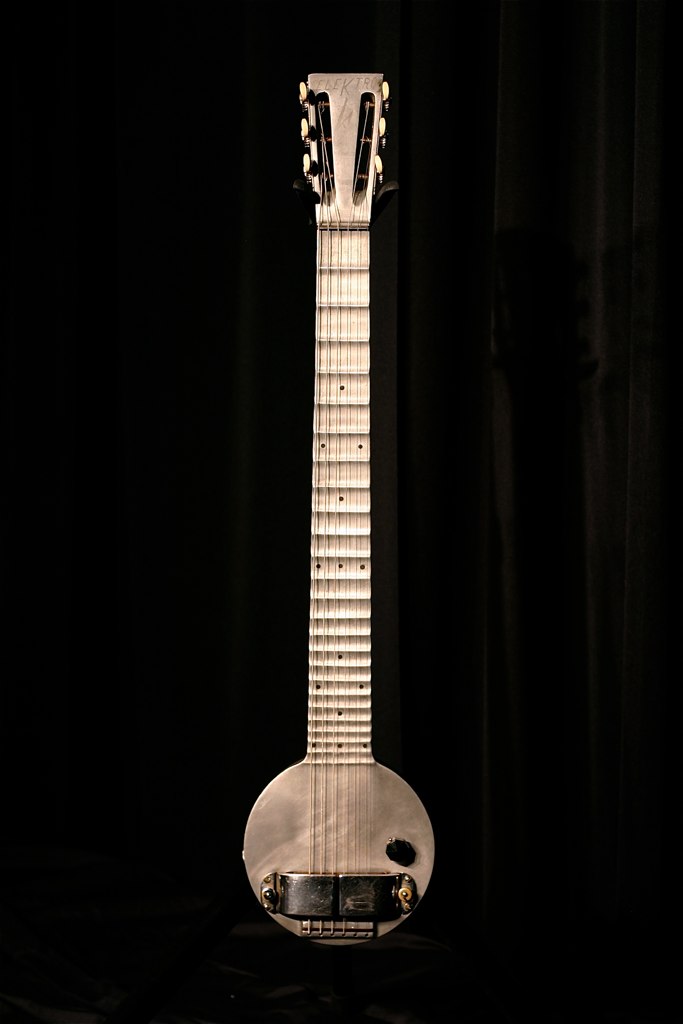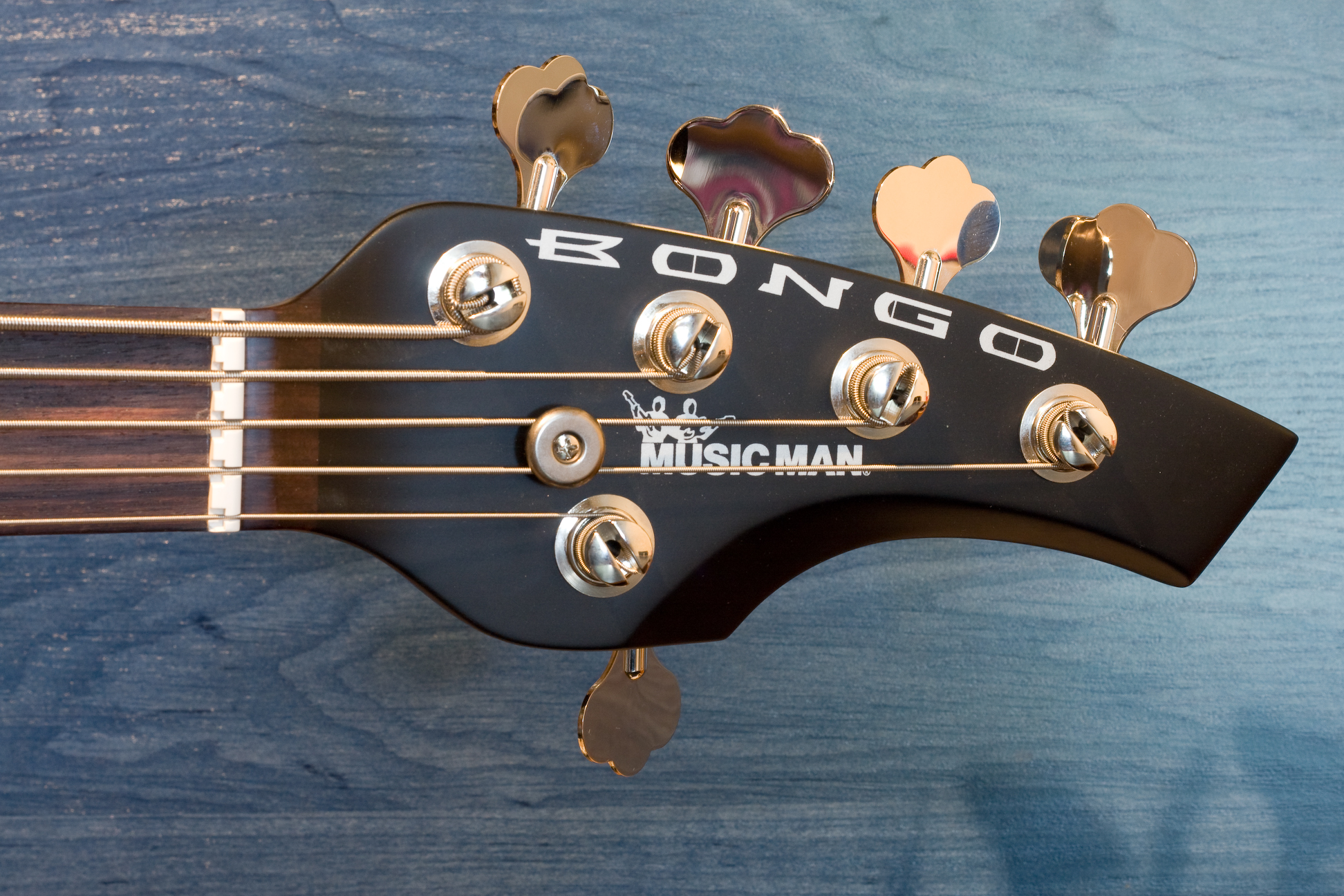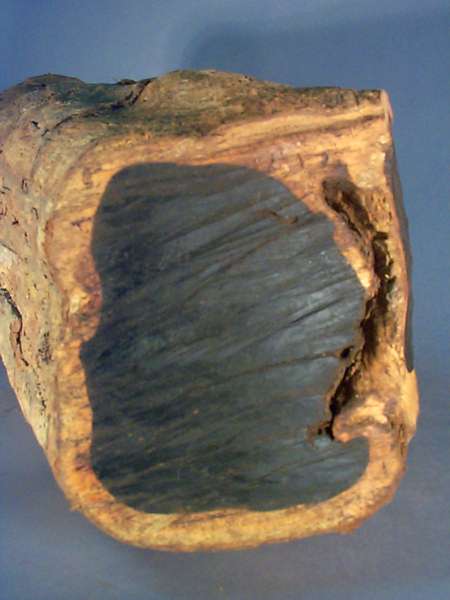|
Fretboard
The fingerboard (also known as a fretboard on fretted instruments) is an important component of most stringed instruments. It is a thin, long strip of material, usually wood, that is laminated to the front of the neck of an instrument. The strings run over the fingerboard, between the nut and bridge. To play the instrument, a musician presses strings down to the fingerboard to change the vibrating length, changing the pitch. This is called '' stopping'' the strings. Depending on the instrument and the style of music, the musician may pluck, strum or bow one or more strings with the hand that is not fretting the notes. On some instruments, notes can be sounded by the fretting hand alone, such as with hammer ons, an electric guitar technique. The word "fingerboard" in other languages sometimes occurs in musical directions. In particular, the direction ''sul tasto'' (Ital., also ''sulla tastiera'', Fr. ''sur la touche'', G. ''am Griffbrett'') for bowed string instruments to p ... [...More Info...] [...Related Items...] OR: [Wikipedia] [Google] [Baidu] |
Guitar
The guitar is a fretted musical instrument that typically has six strings. It is usually held flat against the player's body and played by strumming or plucking the strings with the dominant hand, while simultaneously pressing selected strings against frets with the fingers of the opposite hand. A plectrum or individual finger picks may also be used to strike the strings. The sound of the guitar is projected either acoustically, by means of a resonant chamber on the instrument, or amplified by an electronic pickup and an amplifier. The guitar is classified as a chordophone – meaning the sound is produced by a vibrating string stretched between two fixed points. Historically, a guitar was constructed from wood with its strings made of catgut. Steel guitar strings were introduced near the end of the nineteenth century in the United States; nylon strings came in the 1940s. The guitar's ancestors include the gittern, the vihuela, the four-course Renaissance guitar, an ... [...More Info...] [...Related Items...] OR: [Wikipedia] [Google] [Baidu] |
Inlay (guitar)
Inlay on guitars or similar fretted instruments are decorative materials set into the wooden surface of the instrument using standard inlay techniques. Although inlay can be done on any part of a guitar, it is most commonly found on the fretboard, headstock—typically the manufacturer's logo—and around the sound hole of acoustic guitars. Only the positional markers on the fretboard or side of neck and the rosette around the sound hole serve any function other than decoration (the rosette serves as reinforcement). Nacre ("mother of pearl"), plastic and wood are the materials most often used as inlay. Some very limited edition high-end or custom-made guitars have artistic inlay designs that span the entire front (or even the back) of the guitar. These designs use a variety of different materials and are created using techniques borrowed from furniture making. While these designs are often just very elaborate decorations, they are sometimes works of art that even depict a parti ... [...More Info...] [...Related Items...] OR: [Wikipedia] [Google] [Baidu] |
Neck (music)
The neck is the part of certain string instruments that projects from the main body and is the base of the fingerboard, where the fingers are placed to stop the strings at different pitches. Guitars, banjos, ukuleles, lutes, the violin family, and the mandolin family are examples of instruments which have necks. Necks are also an integral part of certain woodwind instruments, like for instance the saxophone. The word for neck also sometimes appears in other languages in musical instructions. The terms include ''manche'' (French), ''manico'' (Italian), and ''Hals'' (German). Guitar The neck of a guitar includes the guitar's frets, fretboard, tuners, headstock, and truss rod. The wood used to make the fretboard will usually differ from the wood in the rest of the neck. The bending stress on the neck is considerable, particularly when heavier gauge strings are used (see Strings and tuning), and the ability of the neck to resist bending (see Truss rod) is important to the guita ... [...More Info...] [...Related Items...] OR: [Wikipedia] [Google] [Baidu] |
Fret
A fret is any of the thin strips of material, usually metal wire, inserted laterally at specific positions along the neck or fretboard of a stringed instrument. Frets usually extend across the full width of the neck. On some historical instruments and non-European instruments, frets are made of pieces of string tied around the neck. Frets divide the neck into fixed segments at intervals related to a musical framework. On instruments such as guitars, each fret represents one semitone in the standard western system, in which one octave is divided into twelve semitones. ''Fret'' is often used as a verb, meaning simply "to press down the string behind a fret". ''Fretting'' often refers to the frets and/or their system of placement. Explanation Pressing the string against the fret reduces the vibrating length of the string to that between the bridge and the next fret between the fretting finger and the bridge. This is damped if the string were stopped with the soft fingertip o ... [...More Info...] [...Related Items...] OR: [Wikipedia] [Google] [Baidu] |
Electric Guitar
An electric guitar is a guitar that requires external amplification in order to be heard at typical performance volumes, unlike a standard acoustic guitar (however combinations of the two - a semi-acoustic guitar and an electric acoustic guitar exist). It uses one or more pickups to convert the vibration of its strings into electrical signals, which ultimately are reproduced as sound by loudspeakers. The sound is sometimes shaped or electronically altered to achieve different timbres or tonal qualities on the amplifier settings or the knobs on the guitar from that of an acoustic guitar. Often, this is done through the use of effects such as reverb, distortion and "overdrive"; the latter is considered to be a key element of electric blues guitar music and jazz and rock guitar playing. Invented in 1932, the electric guitar was adopted by jazz guitar players, who wanted to play single-note guitar solos in large big band ensembles. Early proponents of the electric guitar ... [...More Info...] [...Related Items...] OR: [Wikipedia] [Google] [Baidu] |
Lute
A lute ( or ) is any plucked string instrument with a neck and a deep round back enclosing a hollow cavity, usually with a sound hole or opening in the body. It may be either fretted or unfretted. More specifically, the term "lute" can refer to an instrument from the family of European lutes. The term also refers generally to any string instrument having the strings running in a plane parallel to the sound table (in the Hornbostel–Sachs system). The strings are attached to pegs or posts at the end of the neck, which have some type of turning mechanism to enable the player to tighten the tension on the string or loosen the tension before playing (which respectively raise or lower the pitch of a string), so that each string is tuned to a specific pitch (or note). The lute is plucked or strummed with one hand while the other hand "frets" (presses down) the strings on the neck's fingerboard. By pressing the strings on different places of the fingerboard, the player can sho ... [...More Info...] [...Related Items...] OR: [Wikipedia] [Google] [Baidu] |
Nut (music)
A nut, on a stringed musical instrument, is a small piece of hard material that supports the strings at the end closest to the headstock or scroll. The nut marks one end of the vibrating length of each open string, sets the spacing of the strings across the neck, and usually holds the strings at the proper height from the fingerboard. Along with the bridge, the nut defines the scale lengths (vibrating length) of the open strings. The nut may be made of ebony, ivory, cow bone, brass, Corian or plastic, and is usually notched or grooved for the strings. The grooves are designed to lead the string from the fingerboard to the headstock or pegbox in a smooth curve, to prevent damage to the strings or their windings. Bowed string instruments in particular benefit from an application of soft pencil graphite in the notches of the nut, to preserve the delicate flat windings of their strings. Etymology The word may have come from the German ''Nut'' (pronounced "noot"), meaning ''groove'' ... [...More Info...] [...Related Items...] OR: [Wikipedia] [Google] [Baidu] |
Sitar
The sitar ( or ; ) is a plucked stringed instrument, originating from the Indian subcontinent, used in Hindustani classical music. The instrument was invented in medieval India, flourished in the 18th century, and arrived at its present form in 19th-century India. Khusrau Khan, an 18th century figure of Mughal Empire has been identified by modern scholarship as the originator of Sitar. According to most historians he developed sitar from setar, an Iranian instrument of Abbasid or Safavid origin. Another view supported by a minority of scholars is that Khusrau Khan developed it from '' Veena''. Used widely throughout the Indian subcontinent, the sitar became popularly known in the wider world through the works of Ravi Shankar, beginning in the late 1950s and early 1960s. In the 1960s, a short-lived trend arose for the use of the sitar in Western popular music, with the instrument appearing on tracks by bands such as the Beatles, the Doors, the Rolling Stones and others. Etymol ... [...More Info...] [...Related Items...] OR: [Wikipedia] [Google] [Baidu] |
Ebony
Ebony is a dense black/brown hardwood, coming from several species in the genus '' Diospyros'', which also contains the persimmons. Unlike most woods, ebony is dense enough to sink in water. It is finely textured and has a mirror finish when polished, making it valuable as an ornamental wood. The word ''ebony'' comes from the Ancient Egyptian ', through the Ancient Greek ('), into Latin and Middle English. Species Species of ebony include ''Diospyros ebenum'' (Ceylon ebony), native to southern India and Sri Lanka; '' D. crassiflora'' (Gabon ebony), native to western Africa; and '' D. celebica'' (Sulawesi ebony), native to Indonesia and prized for its luxuriant, multi-colored wood grain. Mauritius ebony, '' D. tessellaria'', was largely exploited by the Dutch in the 17th century. Some species in the genus yield an ebony with similar physical properties, but striped rather than the even black of ''D. ebenum''. Uses Ebony has a long history of use, and carved pieces ha ... [...More Info...] [...Related Items...] OR: [Wikipedia] [Google] [Baidu] |
Double Bass
The double bass (), also known simply as the bass () (or #Terminology, by other names), is the largest and lowest-pitched Bow (music), bowed (or plucked) string instrument in the modern orchestra, symphony orchestra (excluding unorthodox additions such as the octobass). Similar in structure to the cello, it has four, although occasionally five, strings. The bass is a standard member of the orchestra's string section, along with violins, viola, and cello, ''The Orchestra: A User's Manual'' , Andrew Hugill with the Philharmonia Orchestra as well as the concert band, and is featured in Double bass concerto, concertos, solo, and chamber music in European classical music, Western classical music.Alfred Planyavsky [...More Info...] [...Related Items...] OR: [Wikipedia] [Google] [Baidu] |
Mandolin
A mandolin ( it, mandolino ; literally "small mandola") is a stringed musical instrument in the lute family and is generally plucked with a pick. It most commonly has four courses of doubled strings tuned in unison, thus giving a total of 8 strings, although five (10 strings) and six (12 strings) course versions also exist. There are of course different types of strings that can be used, metal strings are the main ones since they are the cheapest and easiest to make. The courses are typically tuned in an interval of perfect fifths, with the same tuning as a violin (G3, D4, A4, E5). Also, like the violin, it is the soprano member of a family that includes the mandola, octave mandolin, mandocello and mandobass. There are many styles of mandolin, but the three most common types are the ''Neapolitan'' or ''round-backed'' mandolin, the ''archtop'' mandolin and the ''flat-backed'' mandolin. The round-backed version has a deep bottom, constructed of strips of wood, glued toge ... [...More Info...] [...Related Items...] OR: [Wikipedia] [Google] [Baidu] |
Rosewood
Rosewood refers to any of a number of richly hued timbers, often brownish with darker veining, but found in many different hues. True rosewoods All genuine rosewoods belong to the genus ''Dalbergia''. The pre-eminent rosewood appreciated in the Western world is the wood of '' Dalbergia nigra''. It is best known as "Brazilian rosewood", but also as "Bahia rosewood". This wood has a strong, sweet smell, which persists for many years, explaining the name ''rosewood''. Another classic rosewood comes from '' Dalbergia latifolia'', known as (East) Indian rosewood or ''sonokeling'' (Indonesia). It is native to India and is also grown in plantations elsewhere in Pakistan (Chiniot). Madagascar rosewood ('' Dalbergia maritima''), known as ''bois de rose'', is highly prized for its red color. It is overexploited in the wild, despite a 2010 moratorium on trade and illegal logging, which continues on a large scale. Throughout southeast Asia, '' Dalbergia oliveri'' is harvested for us ... [...More Info...] [...Related Items...] OR: [Wikipedia] [Google] [Baidu] |









